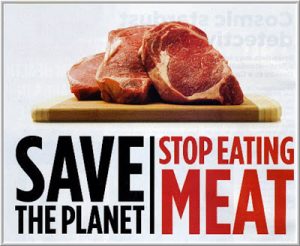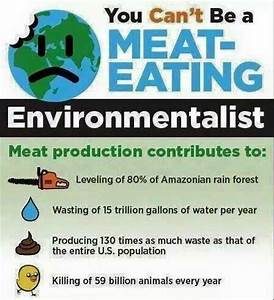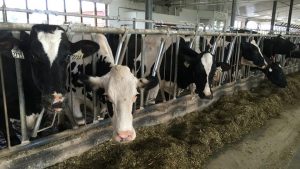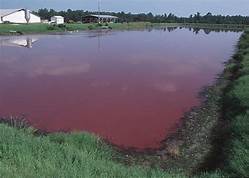 I’ve been writing about the horrors and suffering that is inflicted upon animals raised for food. As Paul McCartney once said, “If slaughterhouses had glass walls everyone would be vegan.” Today I’d like to inform you about animal agriculture and the affects on the environment. If I can’t convince you to go vegan by describing the cruelty done to animals, maybe you’ll go vegan because of the environmental impact of meat-eating on our planet.
I’ve been writing about the horrors and suffering that is inflicted upon animals raised for food. As Paul McCartney once said, “If slaughterhouses had glass walls everyone would be vegan.” Today I’d like to inform you about animal agriculture and the affects on the environment. If I can’t convince you to go vegan by describing the cruelty done to animals, maybe you’ll go vegan because of the environmental impact of meat-eating on our planet. It takes an enormous amount of water to grow crops just for animals to eat, hose down filthy factory farms,and give animals water to drink. A single cow used for milk can drink up to 50 gallons of water per day—or twice that amount in hot weather—and it takes 683 gallons of water to produce just one gallon of milk. And the poor dairy cows suffer in what the industry calls the “rape rack” being impregnated their entire lives, just to keep them giving milk, while their babies are taken away to be turned into veal.
It takes an enormous amount of water to grow crops just for animals to eat, hose down filthy factory farms,and give animals water to drink. A single cow used for milk can drink up to 50 gallons of water per day—or twice that amount in hot weather—and it takes 683 gallons of water to produce just one gallon of milk. And the poor dairy cows suffer in what the industry calls the “rape rack” being impregnated their entire lives, just to keep them giving milk, while their babies are taken away to be turned into veal.
 Cows killed for meat must consume 16 pounds of vegetation in order to convert them into one pound of flesh. It takes more than 2,400 gallons of water to produce one pound of beef, while producing one pound of tofu only requires 244 gallons of water and only 25 gallons to produce a pound of wheat! Raising animals for food consumes more than half of all water used in the U.S. By going vegan, one person can save approximately 219,000 gallons of water a year.
Cows killed for meat must consume 16 pounds of vegetation in order to convert them into one pound of flesh. It takes more than 2,400 gallons of water to produce one pound of beef, while producing one pound of tofu only requires 244 gallons of water and only 25 gallons to produce a pound of wheat! Raising animals for food consumes more than half of all water used in the U.S. By going vegan, one person can save approximately 219,000 gallons of water a year.
Of all raw materials and fossil fuels used in the U.S., more than one-third are devoted to raising animals for food. According to the Environmental Protection Agency, raising animals for food is the number-one source of water pollution in the U.S. Runoff from factory farms and livestock grazing pollutes our rivers and lakes. Animals raised for food in the U.S. produce many times more excrement than does the entire human population of the country.
 According to the U.S. Environmental Protection Agency (EPA), animals on U.S. factory farms produce about 500 million tons of manure each year. A typical pig factory generates the same amount of raw waste as a city of 12,000 people. With no animal sewage processing plants, it is most often stored in waste “lagoons” that fester with bacteria and viruses and contaminate the groundwater. Studies have shown that these lagoons also emit toxic airborne chemicals that can cause inflammatory, immune, irritation and neurochemical problems in humans.
According to the U.S. Environmental Protection Agency (EPA), animals on U.S. factory farms produce about 500 million tons of manure each year. A typical pig factory generates the same amount of raw waste as a city of 12,000 people. With no animal sewage processing plants, it is most often stored in waste “lagoons” that fester with bacteria and viruses and contaminate the groundwater. Studies have shown that these lagoons also emit toxic airborne chemicals that can cause inflammatory, immune, irritation and neurochemical problems in humans.
Factory farms frequently dodge water pollution limits by spraying liquid manure into the air, creating mists that are carried away by the wind. People who live nearby are forced to inhale the toxins and pathogens from the sprayed manure. If you can smell a farm, it’s because you’re inhaling the airborne waste along with horrendous animal suffering.
 Today it’s easier than ever to switch to an Earth-friendly vegan diet. You will likely see an improvement in your health, and your conscience will be lighter knowing that you are not eating or drinking animals who suffer their whole lives. You will be doing your part to help save our planet and its animals.
Today it’s easier than ever to switch to an Earth-friendly vegan diet. You will likely see an improvement in your health, and your conscience will be lighter knowing that you are not eating or drinking animals who suffer their whole lives. You will be doing your part to help save our planet and its animals.